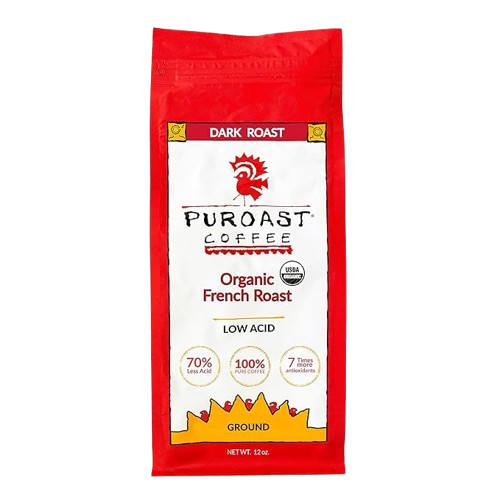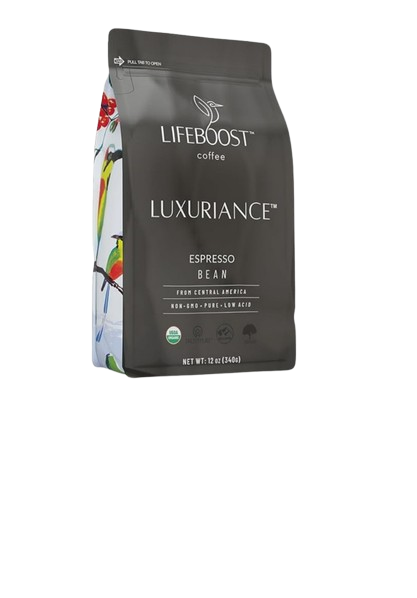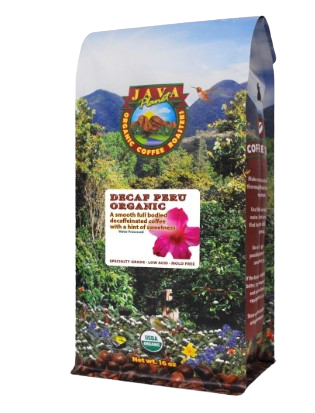Table of Contents
Introduction
Low-acid Coffee Lovers frequently appreciate their morning cup for its rich flavor and empowering impact. Notwithstanding, for those with delicate stomachs or heartburn, customary espresso can here and there feel excessively cruel because of its acridity. The arrangement? Low-corrosive espresso! Yet, what precisely makes an espresso low-corrosive, and how would you pick the best one? How about we investigate?
What is low-acid coffee?
Low-acid coffee is a kind of coffee intended to be gentler on your stomach by lessening its regular causticity. Causticity in espresso alludes to the pH level and certain acidic mixtures that can make espresso taste splendid and sharp yet may likewise bother delicate stomachs or cause heartburn. Low-acid espresso offers a smoother experience, making pursuing it a great decision for individuals who love espresso but battle with stomach-related issues.
Where Does coffee’s Causticity Come From?
Espresso’s causticity can be affected by a few variables:
Regular Structure of the Beans: Some espresso beans are normally higher in acidic mixtures in view of where and how they are developed. For instance, beans from locales with higher heights, similar to Ethiopia or Kenya, will quite often be more acidic.
Simmering Cycle: Lighter dishes save a greater amount of the regular sharpness of the beans, while more obscure meals separate acidic mixtures during the broiling system, bringing about a smoother cup.
Blending Techniques: What espresso is prepared can likewise mean for its causticity. For instance, high-temperature water extricates more acidic mixtures, while cold blending decreases them altogether.
How Do Coffee Makers Lower Sharpness?
Makers and espresso fans utilize a few techniques to decrease espresso’s corrosiveness:
Select Normally low-acid coffee Beans
Certain espresso-developing locales produce beans that are normally low in acridity. For example:
Brazil: Espresso filled in Brazil will in general be smooth and low-corrosive because of its lower-height developing areas.
Sumatra (Indonesia): Sumatran beans are known for their hearty, rich flavor and normally low acridity.
Simmering Procedures
How coffee is simmered assumes a major part in its causticity level.
Hazier Dishes: Longer broiling times separate chlorogenic acids; the mixtures account for coffee’s corrosiveness. This results in an all-the-smoother and low-acid brew.
Extraordinary Cooking Cycles: A few makers utilize restrictive strategies to target and lessen acidic mixtures in the beans explicitly.
Fermenting Strategies
Fermenting espresso in some ways can assist with bringing down its corrosiveness.
Cold Brewing: Soaking espresso beans in iced water for 12-24 hours extricates less acridity compared with customary hot preparing techniques.
Low-acidic Added substances: Adding fixings like calcium-rich water or a touch of baking soft drink can likewise assist with killing sharpness.
Advantages of Low-Acid Coffee
Delicate on the Stomach: Ideal for people with GERD, heartburn, or ulcers.
Smooth Flavor Profile: Low-acid coffee have a gentle, less severe taste.
Tooth-Accommodating: Lessens finish disintegration contrasted with high-corrosive choices.
Top Highlights to Search for in Low-Acid coffee
While looking for the best low-acid coffee, think about these elements:
Bean Beginning: Espresso from locales like Brazil, Sumatra, or Mexico regularly has lower causticity.
Cook Level: More obscure meals are frequently less acidic because of longer simmering times.
Handling Techniques: Search for espresso handled to lessen causticity, for example, chilly blend concentrates or uncommonly treated beans.
The Best Low-Acid Espresso Brands
The following are a couple of brands known for their top-notch, low-acid coffee:
1. Puroast Espresso

| Brand | Puroast Coffee |
| Item Form | Ground |
| Flavor | Premium Organic French Roast |
| Caffeine Content Description | Caffeinated |
| Roast Level | Dark Roast |
Puroast Low-Acid Coffee Ground | Organic French Roast Ground | Dark Roast | High Antioxidants & High pH |No Bitter Aftertaste | Reduced Heartburn & GERD | Suitable for Cold Brew – 12 oz
Known for its exclusive cooking process, which decreases causticity fundamentally.
Offers different flavors and decaf choices.
2. LifeBoost coffee

| Brand | LIFEBOOST |
| Item Form | Whole Bean |
| Flavor | WHOLE BEAN Espresso |
| Caffeine Content Description | Caffeinated |
| Roast Level | Medium Roast |
Lifeboost Coffee Organic coffee Beans Whole: Low Acid coffee Single Origin Organic Coffee; Non-GMO Espresso Coffee; Third Party Tested For Mycotoxins & Pesticides; Whole Bean, 12 Ounces
Single-beginning, natural, and shade-developed.
Low-acid and compound-free with a rich, smooth flavor.
3. Volcanica low-acid Coffee

| Brand | Volcanica Coffee |
| Item Form | Whole Bean |
| Flavor | Whole Bean,Tanzanian Peaberry |
| Caffeine Content Description | Caffeinated |
| Roast Level | Medium Roast |
Tanzania Peaberry and Costa Rica Peaberry, Whole Bean Coffee Bundle, Fresh Roasted, 2-16 oz Bags
100 percent unadulterated Tanzanian peaberry espresso from the inclines of Mount Kilimanjaro that is brilliantly low-acid, has a rich body, an extraordinary flavor, and a fragrant smell combined with smooth, winy suggestions.
100 percent Unadulterated Costa Rican Peaberry that gives equilibrium and power of kind of products of the soil that is gentle, sweet, and brilliant
Medium broiled entire bean espresso permits the genuine flavor trademark to come through for a noteworthy taste.
New broiled, then promptly pressed and fixed to guarantee newness.
100 percent consumer loyalty is ensured.
4. Java Planet

| Brand | Java Planet |
| Item Form | Whole Bean |
| Flavor | Colombian |
| Caffeine Content Description | Caffeinated |
| Roast Level | Medium Roast |
Java Planet Low-Acid Coffee, Organic Colombian Single Origin: Whole Bean Medium Dark Roast—Smooth Full Flavored Coffee Bean, 1LB Bag
Incredible tasting, low-acid espresso! This espresso is our most well-known espresso, revered by our clients looking for low corrosiveness and incredible flavor. While the outsider lab tried as low acid, this espresso may not be reasonable for people with specific stomach-related responsive qualities.
True serenity! As well as being ensured natural, our Colombian is additionally Smithsonian Bird Amicable Confirmed. This safeguards transitory bird environments as well as other untamed life.
No pesticides, forms, or weighty metals! We utilize just 100 percent natural specialty-grade Arabica espresso beans that are autonomously tried for shape and weighty metals. In drinking our espresso, you will just assimilate helpful cell reinforcements normally found in espresso developed at high height
Blending Tips for Low-acid Coffee
Fermenting low-acid espresso isn’t just about the beans you pick—it additionally relies heavily on how you set it up. These tips assist with diminishing the sharpness in your espresso while improving its flavor:
Utilize a Coarse Toil
Why It Works: A coarse drudgery implies the espresso particles are bigger, which dials back the extraction interaction during fermenting. This more slow extraction discharges low acid mixtures, bringing about a smoother and low acid coffee cup.
Step-by-step instructions to make it happen: Utilize a burr processor to accomplish a predictable coarse drudgery, like the surface of ocean salt. This is particularly compelling for techniques like French press or cold brew.
Expert Tip: Keep away from fine crushes, as they over-separate acidic mixtures and can make your espresso taste sharp or unpleasant.
Attempt Cold Brewing
Why It Works: Cold brewing includes soaking espresso beans in iced water for a drawn-out period (12-24 hours). The chilly temperature dials back the synthetic responses that extricate acidic mixtures, prompting a normally low-acid brew.
The most effective method to make it happen:
Consolidate coarse espresso beans and cold water in a container or pitcher (proportion: 1 mug of coffee beans to 4 cups of water).
Allow it to soak in the fridge for 12–24 hours.
Strain the brew to eliminate the grounds, and you’re left with a smooth, low-acid espresso concentrate.
Weaken with water or milk as wanted prior to serving.
Star Tip: Cold brew likewise remains new for as long as seven days, making pursuing it a helpful decision for espresso darlings with occupied plans.
Add a Touch of Salt or Baking Pop
Why It Works: Both salt and baking soda are basic substances that can assist with killing corrosiveness in your espresso, adjusting its pH, and lessening brutal flavors.
The most effective method to make it happen:
Salt: Add simply a minuscule squeeze (around 1/16 of a teaspoon) to your espresso beans prior to blending or straightforwardly into your fermented espresso. It improves flavor by cutting sharpness.
Baking soda: Utilize a tiny amount (under 1/8 of a teaspoon) in your blended espresso to kill corrosiveness without influencing taste.
Master Tip: Be mindful so as not to get carried away, as a lot of can modify the flavor or make your espresso taste pungent.
Rundown
These preparing strategies—utilizing a coarse drudgery, attempting cold brewing, and adding salt or baking soda—are basic yet successful ways of partaking in a low-acid espresso that is smooth, delicate, and tasty. By integrating these tips, you can mix some low-acid espresso that suits your taste inclinations while being thoughtful to your stomach.
Conclusion
The best low-acid espresso is one that suits your taste buds and supports your wellbeing. Whether you incline toward a solitary beginning blend, a dull dish, or the comfort of a virus mix concentrate, the choices are huge. By investigating the proposals above, you can appreciate espresso without undermining your solace or flavor inclinations.

1 thought on “What is the best low acid coffee?5 best coffee Guide”